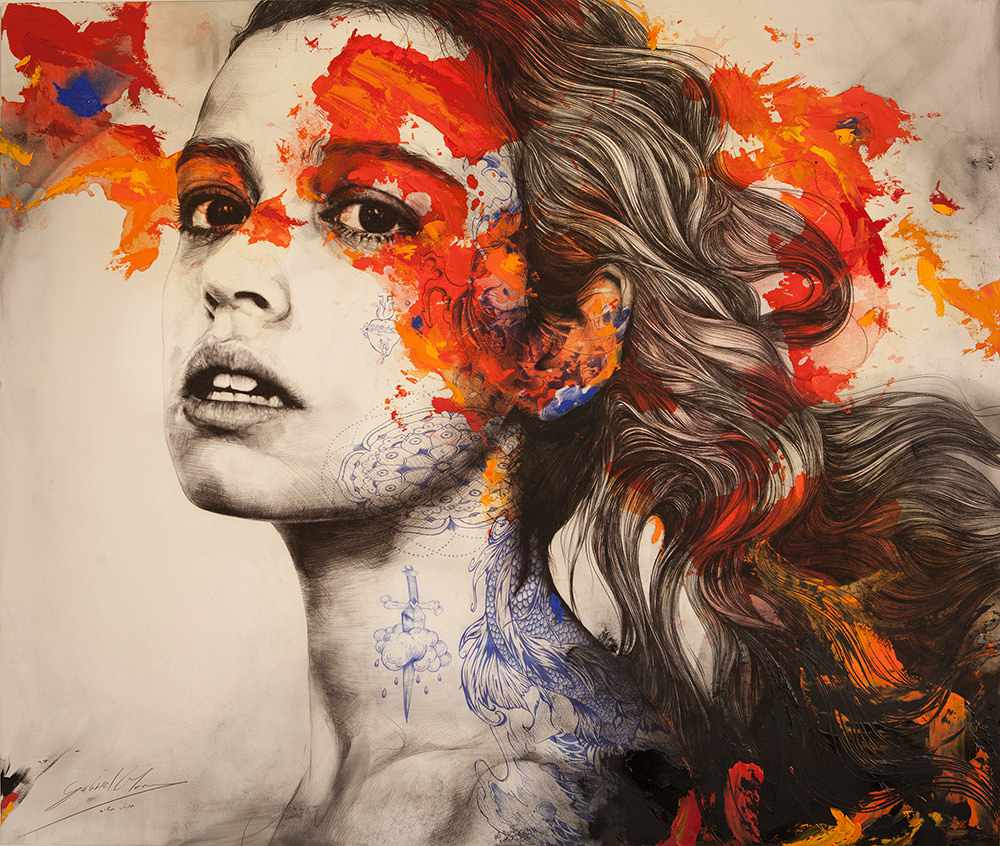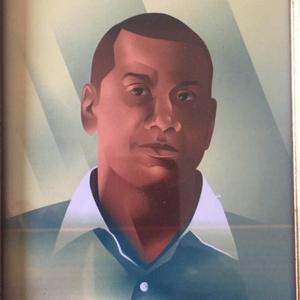Art365/114: Waiting
This 1775 painting depicts the utkata nayika: a heroine impatiently waiting for her beloved. She is typically in a garden or a grove, perhaps a bit scared because of the dark the night lit up by lightning.
In a space that you own. Make your posts free or charge for them. Anywhere in the world. Start in less than a minute.


This 1775 painting depicts the utkata nayika: a heroine impatiently waiting for her beloved. She is typically in a garden or a grove, perhaps a bit scared because of the dark the night lit up by lightning.



Let's talk about translations on World Book Day with this painting of a Maktab-khana, the translation bureau, at Akbar's court. Hindu and Muslim scribes -- fluent in Sanskrit and Persian-- are shown working on the Mahabharata. In this folio, we get a glimpse into the process. Using a large part of the picture space, the artist has used carpets to create two distinct groups. The group on the top seems to be more composed and listening to requests/ comments of their colleagues. The folks at the bottom seem to be having a more intense and animated conversation. It is evident every word and line is being carefully considered and discussed before committing it to paper.



Theydies and Gentlethems, the man is back and it's all straight fire.



The only romance worth pursuing in the summer is with mangoes. I'm tempted to completely ignore the couple in the foreground, although they are beautifully rendered. The prince has a lance in one hand, and perhaps he will use it to knock a few fruits to the ground if they ride that far. The lady is smaller, and on her own horse, but has an arm resting on the man's shoulder. The horses are very close together and seem to match each other's gallop.





These are (late) 18th-century pitchkaris from Jaipur, Rajasthan. Holi is an important festival celebrated with great enthusiasm, and pitchkaris are used to spray (coloured) water.



This is a late 18th-century drawing from the Markandeya Purana, depicting Chandi, an avatar of the goddess in a fight with the demon Shumbha. It was likely made in Kangra, Himachal Pradesh.



March 16, 2022: Theatre Yesterday and Today, by Ron Fassler



Okay, there was never any such thing as a 1944 Tonys. But the awards junkie in me had this thought and decided, for the fun, of it to attempt a peer into the crystal ball in reverse. By that I mean, take a shot at predicting what a Tony Awards might have been for the season in which Oklahoma! would surely have dominated the field — had there been such a night. As the Tonys were handed out for the first time on April 6, 1947 and guessing that perhaps the cut-off date for the season was a month earlier, I’m going to call the season from March 5, 1943 to March 6, 1944 and look into the play and musicals that opened and what the nominees (and winners) might have been.



Marching into March in style, much like Ibrahim Adil Shah II of Bijapur (r. 1580-1627). Known for his patronage of art and culture, Ibrahim Adil Shah II's love for his elephant, Atash Khan, is also legendary. In this vibrant picture, the ruler is riding his favourite elephant, while being surrounded (and waited on) but several others. Atash Khan is the largest and most handsome, with his magnificent tusks embellished with large gold ornaments, especially dangling pearl earrings. The accompanying elephants are equally well-dressed, with jewels, elaborate saddles, and assorted accouterments. The elephants are all beautifully rendered, with a soft brush and dual-toned colour. Each elephant has a distinctive face and features, and the attention paid to details is rather phenomenal.



Loki, my dog, turns two today (well, kind of, he's a leap year baby), and to celebrate his joyous presence, here's a 19th-century painting (possibly from the Deccan) of a pooch and his human.



The official definition of “tattoo” according to Webster is



This grumpy-looking yaksa (nature spirit) dates back to 1 BCE and was made in Chandraketugarh (West Bengal). It was an important site for centuries from Kushan and Shunga rule, extending to the Gupta and Pala-Sena period. It has yielded several objects and artefacts, many of which made it to the illegal antique markets in the West.



Abyssinians played an important role in the administration of the Deccan, so it's no surprise to see portraits of high-ranking officials and rulers in albums. Art historian Mark Zebrowski suggests this is a portrait of Fath Khan, Malik Amber's son and successor. Dressed in typical Ahmadnagar style, he wears a starched turban with a jaunty flap, a robe, bound with a glorious patka, along with a sword that he leans against, a long katyar (punch dagger), and a curious purse (perhaps a writing case), hanging from his patka.



Today, 2/2/22, lends itself to a brassy pun. Since it's too, too, too-too, Ron Gordon, a retired school teacher in California, has suggested that it be celebrated as Trumpet Day.



When the heavens throw a bridge



On January 18, Badal Roy's niece, Piali Roy, announced that the pioneering tabla player had passed away. Here's a piece I wrote about him in 1998.



The Varaha or boar avatar is the third incarnation in the Dasavatara. Of all the depictions, in sculpture and in paintings, this monumental sculpture in Eran, Madhya Pradesh, is probably my favourite. The large boar incarnation of Visnu rescued Bhudevi (earth goddess)-- she clutched onto his tusk, as he tunneled through the depths, where she was held captive.



At the close of Friday's column, I posed a few questions about The Apple Tree (1966) that I promised to answer in this second part, which I will. But I also want to devote the proper space as to why the songs (especially those in the first part of this rare three-part musical) are so special.



I last saw this sculpture over a decade ago but it remains etched in my mind- and is the first image that comes to mind when I think of the half-man-half-lion hence, Narsimha.
